Canada’s ZED-2 reactor defines the future of Candu designs
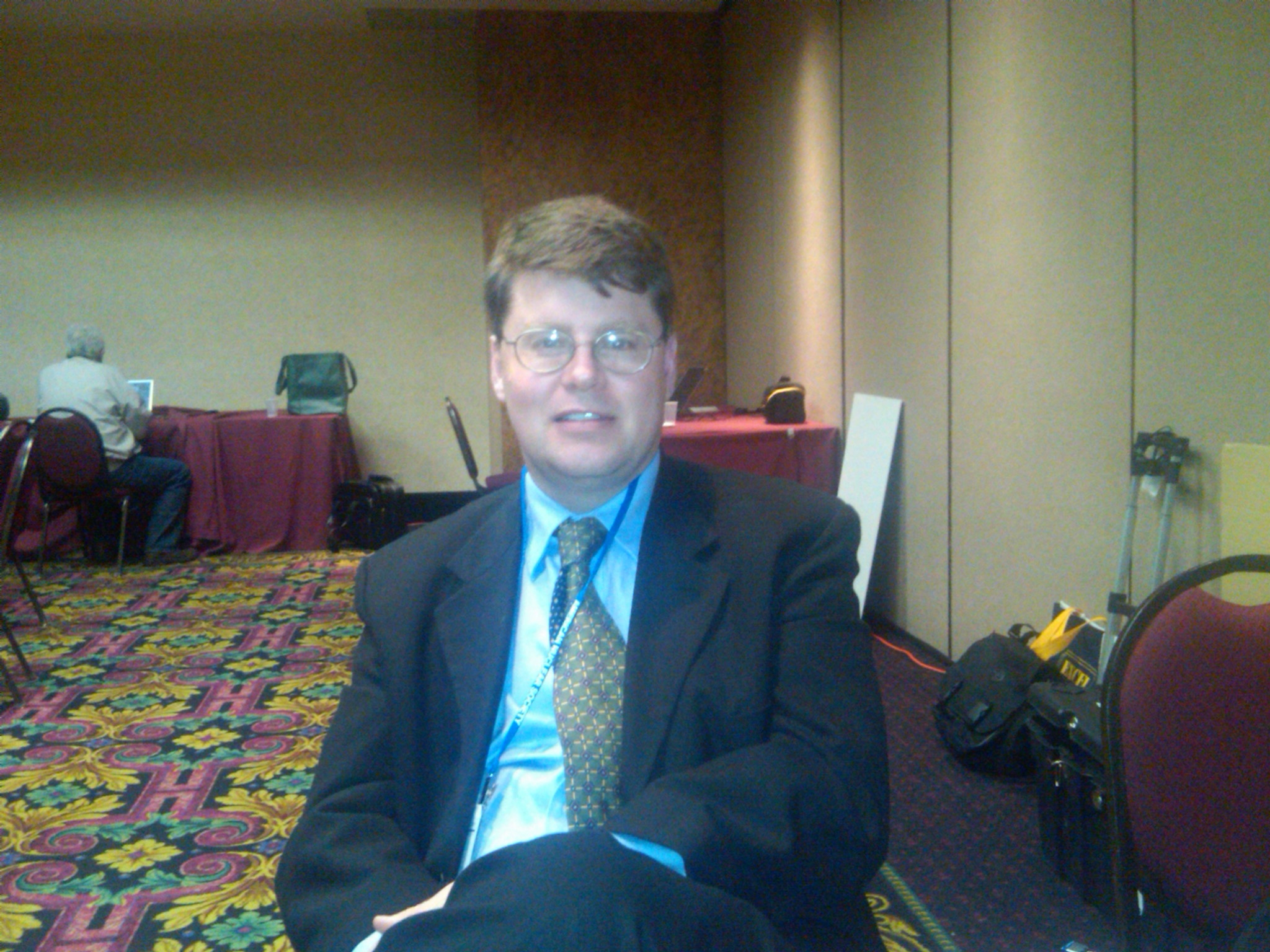
Blair Bromley visiting the ANS Media Office during the 2010 winter meeting in Las Vegas (11/09/10)
What is it that gets a Ph.D. reactor physicist up in the morning to do work associated with a 50-year-old research reactor located at the Atomic Energy of Canada Limited's (AECL) Chalk River Laboratories?
With a worldwide shortage of trained nuclear engineers, Blair Bromley could potentially work in many other countries with growing nuclear power programs. What keeps him in Canada?
It turns out that Bromley likes the fact that with the availability of the ZED-2 low power research reactor, Chalk River is a "one-stop shop for nuclear R&D."
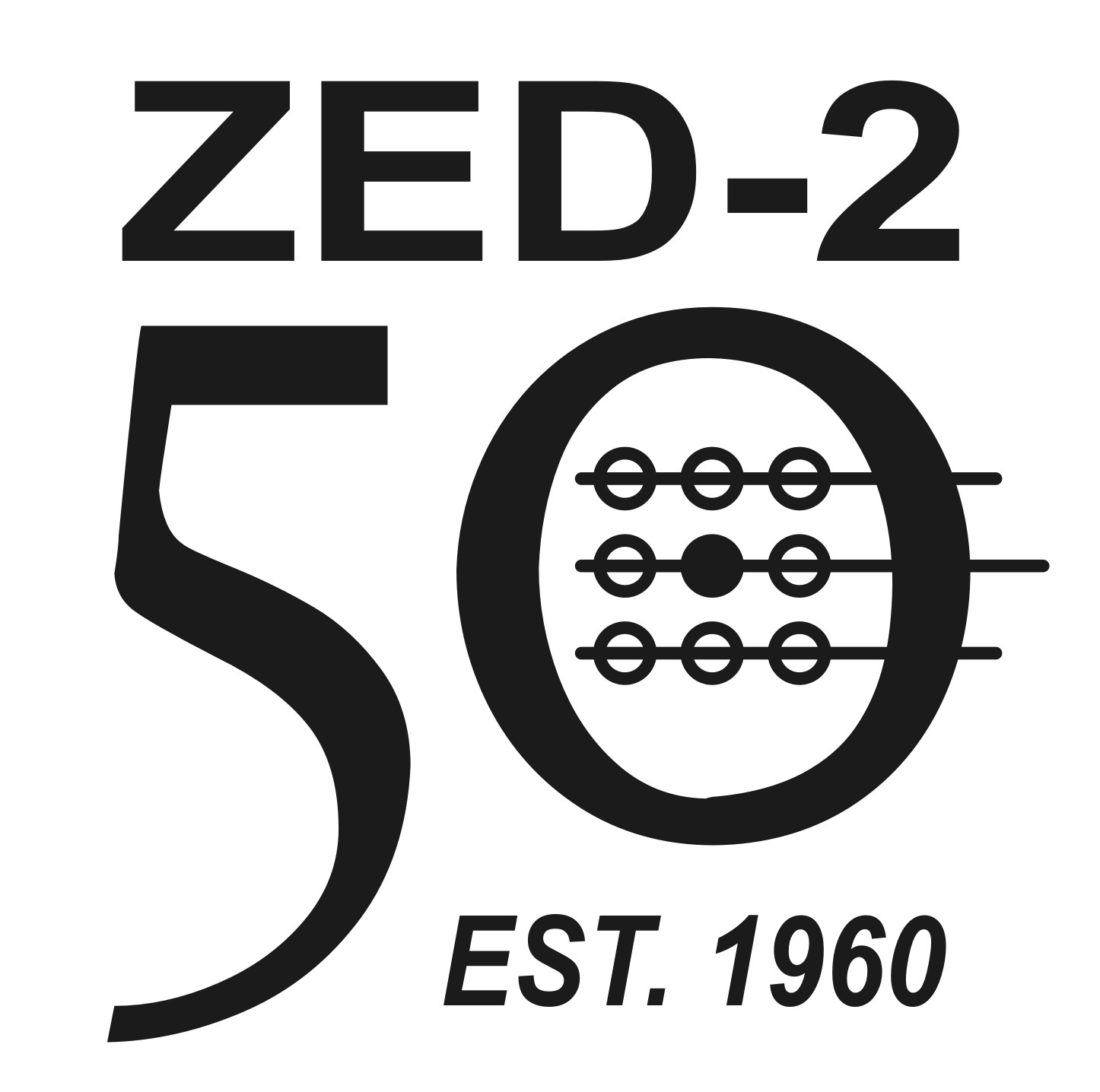
ZED-2 logo
Bromley stopped by the American Nuclear Society's media office at the Winter Meeting in Las Vegas in early November to talk about what he calls "the workhorse of Canada's nuclear reactor physics design program."
He pointed out that "fundamental reactor physics R&D from ZED-2 has been used in almost every Candu reactor ever built."
See the ANS Nuclear Cafe blog post: AECL research reactor gets landmark status
Running the numbers
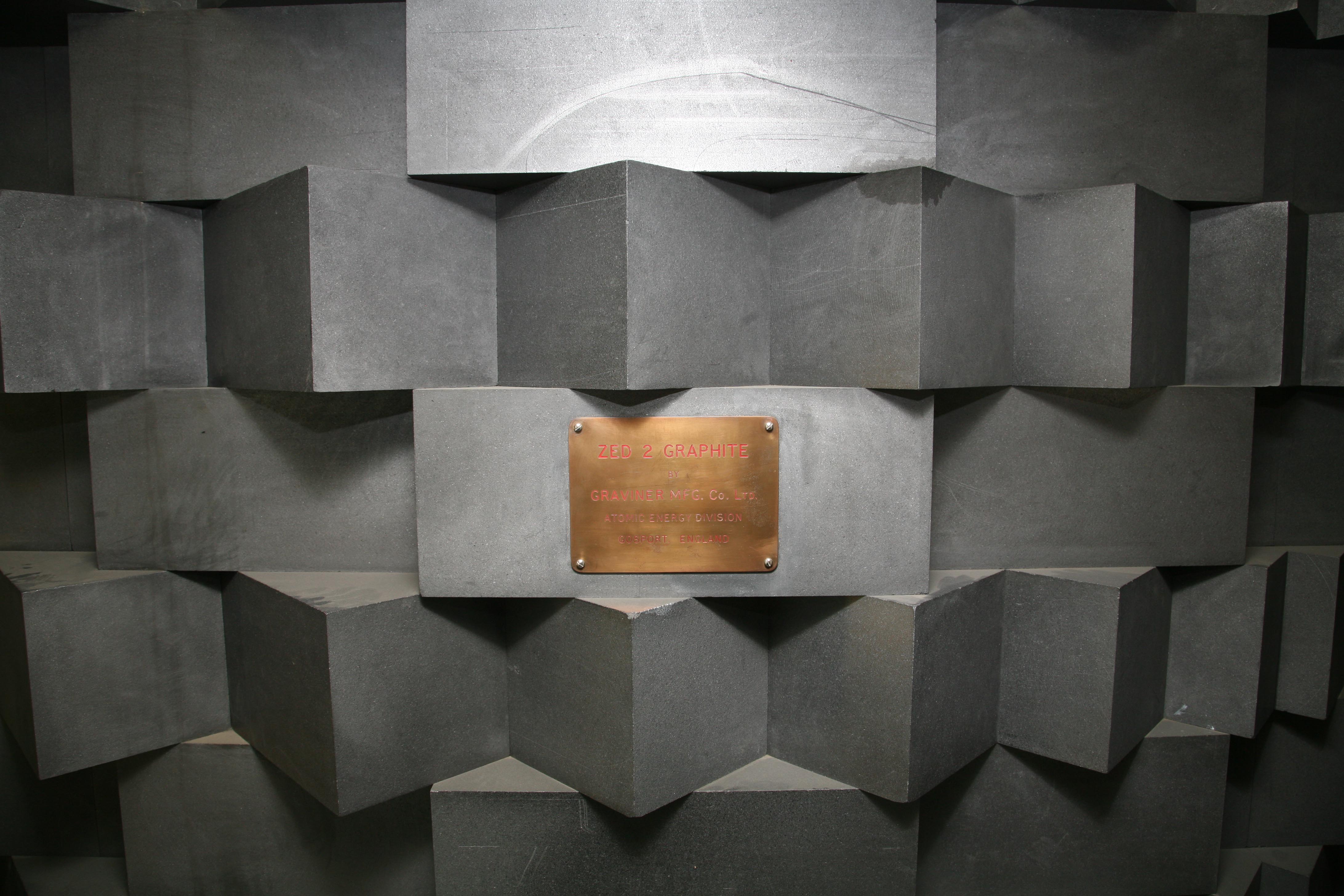
ZED-2 Graphite came from England
The ZED-2 heavy water critical facility (a low power research reactor) is used to produce measurement data for the validation reactor physics computer codes that predict and explain how a reactor will behave during actual operations.
About 30 people work on three teams at the facility. The first team develops computer codes. The second designs and runs ZED-2 experiments, and the third works on validation of codes based on measurements from reactor measurements.
Bromley, who earned his doctorate in nuclear engineering from the University of Illinois, pointed out that a many critical experiments were performed in ZED-2 in support of AECL's new reactor design - the ACR-1000 (Advanced Candu Reactor).
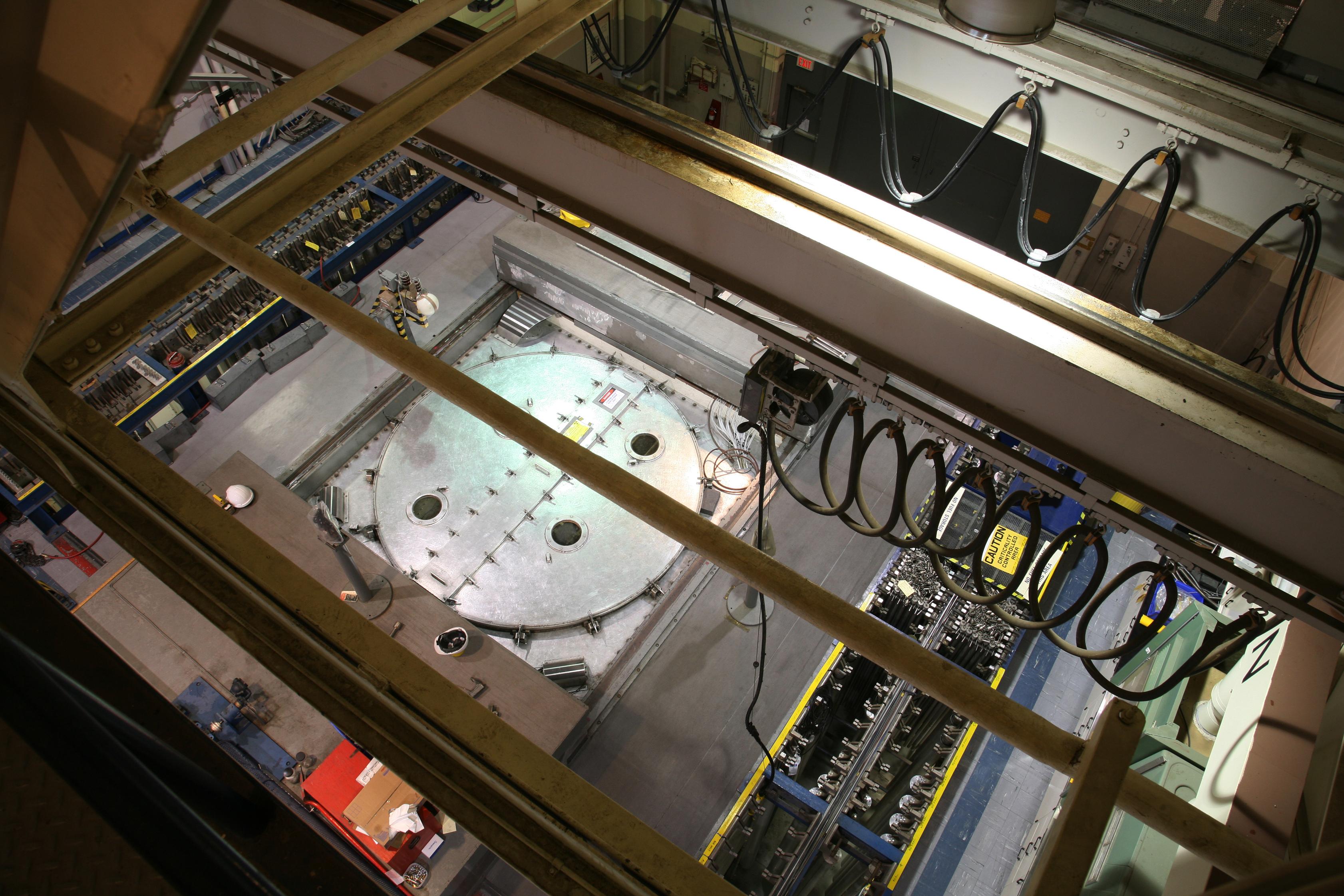
Looking down on ZED-2
"It is relatively easy to configure the ZED-2 reactor for a variety of experiments," Bromley said. "The core is a modest size, with a reactor vessel of about 3.3 meters in diameter and height."
What's next for the ZED-2 reactor? Bromley ticked off a series of potential new tasks, which may include:
· Finishing up experiments in support of the ACR-1000.
· Additional experiments in support of traditional Candu reactors.
· Testing the physics of experimental thorium-based fuels.
· Testing the physics of Candu-type fuel bundles using simulated recycled light-water reactor fuel.
· Testing the physics of fuel lattices representative of those that might be used in a super-critical-water-cooled Candu reactor (Candu-SCWR).
Global future for Candu?
The worldwide installed base of Candu reactors includes 20 units in Canada, four in South Korea, two each in Romania, China, and India, and one each in Argentina and Pakistan. Since the early 1970s, India has adapted the Candu design for its domestic commercial heavy water reactor program.
"The basic design (the Enhanced Candu-6, EC6) is a 700-MWe unit that runs on natural uranium," Bromley said.
The future of the Candu design may be defined by its ability to run on spent fuel from LWRs, which has just 0.95 wt%U-235/U.
"I expect heavy water reactors to have a more important role in the future by taking advantage of the energy potential available in spent fuel. As the world reactor base expands, for every four light water reactors, there could be one heavy water reactor utilizing the spent fuel," Bromley said.
The attractiveness of the Candu design is that it has what is known as a "high neutron economy" and can run on natural uranium, thereby avoiding the need for enriched fuel and large uranium enrichment facilities.
Another advantage is uranium resource utilization.
"With heavy water reactors, you don't waste neutrons and you save more to generate fission. You get more megawatt-days of energy per kilogram of uranium mined, as much as 30 percent or more compared to a PWR," Bromley said.
As we closed the interview with Bromley, the wire services were clicking with news that the federal government in Canada was considering the privatization of AECL's reactor business, while retaining ownership and control of the R&D wing of the government-owned crown corporation.
Bromley declined to comment on these developments. He said that he is hopeful that whatever the outcome may be, the world is going to realize the advantages of heavy water reactors, as embodied in Candu technology, and will start to incorporate it into new fleets of reactors. When that realization occurs, Bromley and his colleagues will be ready to provide the numbers and technical support to show the world how it works.
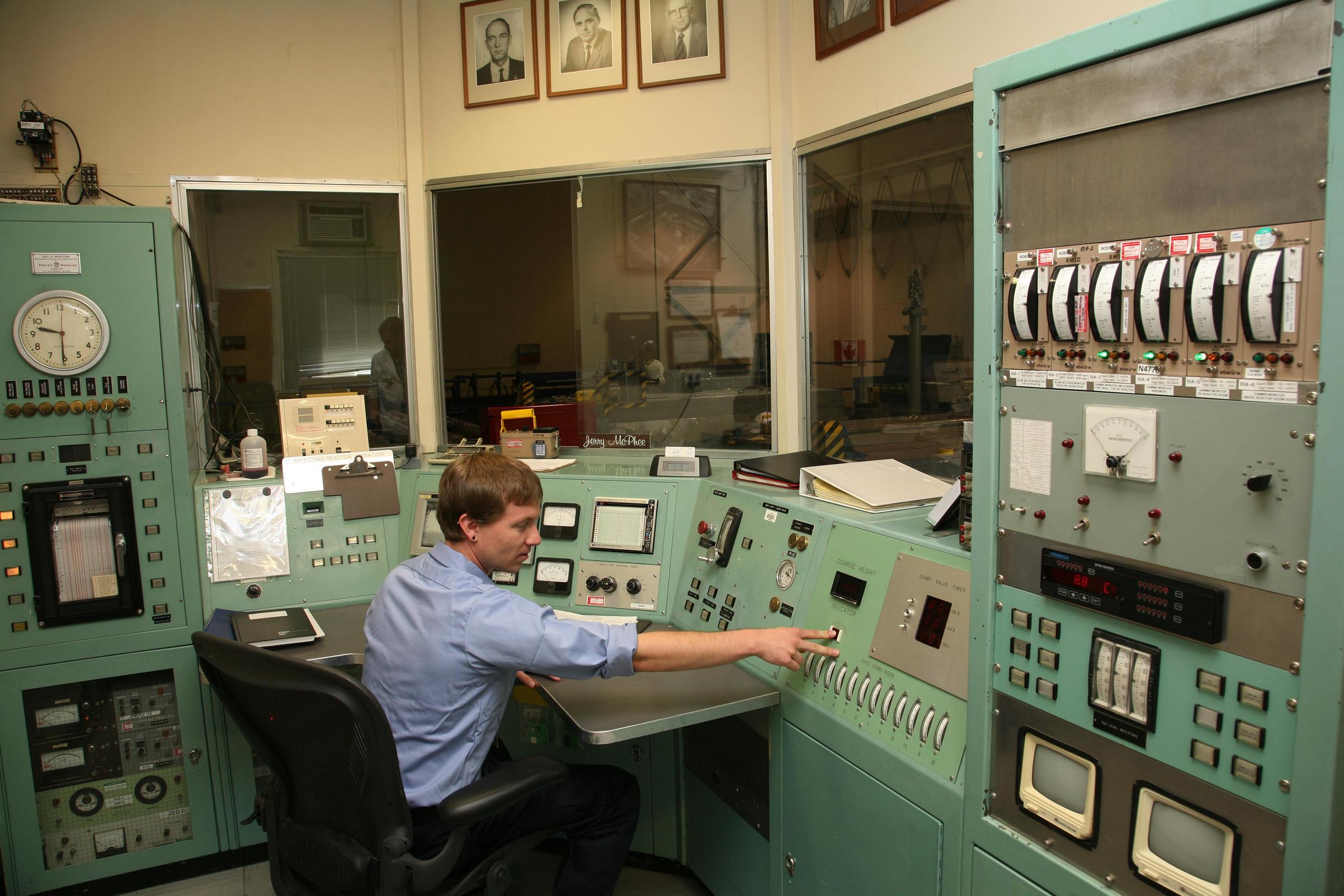
ZED-2 Control Room (file photo courtesy AECL)
# # #

